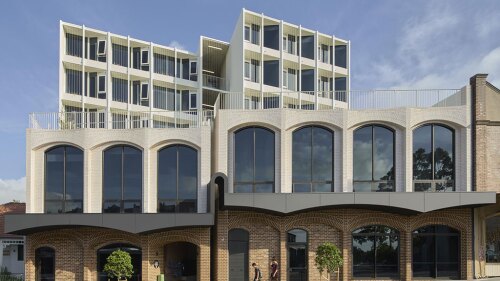As an increasing number of U.S. baby boomer households enter their empty-nester years and start to think about retirement—or at least a change of lifestyle—developers should be thinking about what impact this demographic shift will have on the demand for high-density housing. While very much on the sidelines today, this group of homebuyers will begin feeling a sense of urgency ahead of the balance of the market, as a desire for new and compelling housing that facilitates a desired lifestyle increasingly outweighs concerns about the market, and their sense of what their current home was once or might be worth.
How many affluent senior citizens might actually move to a condominium, and where? How many will choose to retire to a resort location or other area? Where—and how big—will the markets for these types of housing be? To answer these questions, RCLCO helped craft a section of the American Affluence Research Center survey of the wealthiest 10 percent of Americans. Survey respondents, who reflected a range of ages, were asked to “contemplate a change of lifestyle related to retirement and/or their children leaving home.”
According to the survey’s results, 65 percent of respondents expect to “age in place.” While this is a significant majority of the market, it is less than that of the previous generation, 80 to 90 percent of whom remained in their family homes well into their retirement years, typically until they needed more health care services.
Those who expect to move therefore represent a finite—but still significant—market. Of the households that intend to move, about 60 percent plan to stay in their current metropolitan area, moving to a different low-density, single-family home (40 percent), downtown condo (12 percent), or suburban condo (7 percent). Forty percent of those who expect to move—or 14 percent of all respondents—anticipate moving to a resort or other location.
Not surprisingly, perhaps, more eastern- and central-state households intend to move during their empty-nester years, reflecting the added burden of maintaining a suburban home through the winter and other factors.
When those who said they would consider moving to a condo were asked what factors would appeal to them, they replied that they are equally concerned with unit features and location factors. Fifty-eight percent cited “proximity to restaurants/retail” as one of their top-three factors; amenities such as a pool (35 percent), views (35 percent), and parking (34 percent) also were cited as important.
These prospective condo buyers express a preference for relatively large units: 45 percent say they want one that is larger than 2,000 square feet (186 sq m) and another 42 percent say they would consider a 1,500- to 2,000-square-foot (139- to 186-sq-m) unit. Many, however, might be accommodated in a smaller unit that is well designed and highly amenitized and set in a community with significant on-site storage space.
Most of this market still views condominiums—indeed, any form of postfamily housing—as a “buy-down” option, with most (69 percent) expecting to pay more than 20 percent less than the value of their current home and only 4 percent expecting to pay more than the value of their current home. To inform prospective consumers about the full-value proposition of new intown housing, developers will need to highlight the lifestyle benefits of new construction that offers modern technology, provides a more healthful environment, and reduces reliance on the automobile. To quantify what these findings mean for the overall depth of the market, the size of the affluent populations of major U.S. metro areas that are aged 55 to 74 was examined. Of the almost 8.5 million U.S. households that fit into this category, slightly more than half (4.5 million) reside within one of the nation’s 18 largest metropolitan areas. Empty-nester demand for high-end condos in these key metro areas totals more than 250,000 units, with the deepest markets—New York City; Washington, D.C.; Chicago; and Los Angeles—totaling 20,000 or more potential transactions each.
The results of this survey and RCLCO’s analysis of the depth of the market offer three key takeaway messages for developers:
- The market for condominiums targeted to affluent seniors is both meaningful and finite. Significant numbers of households in the largest U.S. metro areas are interested in this housing change. But demand for most products, particularly in smaller metro areas, can be measured in thousands—rather than hundreds of thousands—of units. Wise developers will understand the depth of the markets in which they are active, and will secure sites that are capable of strong market capture.
- The product expectations of this population are fairly traditional. Prospective purchasers initially will expect large units with plenty of “bells and whistles” in appealing locations. In high-cost markets, developers will need to coach some buyers into smaller units to capture as broad a market as possible.
- Potential buyers’ financial expectations, while somewhat unrealistic, also are fairly traditional. These buyers expect to be moving down rather than up in terms of pricing; sales and marketing professionals will need to educate these consumers regarding the benefits of new construction and the overall value of high-density living.
These findings present challenges for developers, who will need to make smart location decisions and carefully fine-tune their product offerings and price points to appeal to older, affluent homebuyers. They also will need to educate prospective senior condo buyers about the realities of construction costs in order to convince them to accept smaller or more expensive units. The good news is that there is a market for high-end housing for seniors, and savvy developers who are able to meet these homebuyers’ expectations should experience success in coming years.




